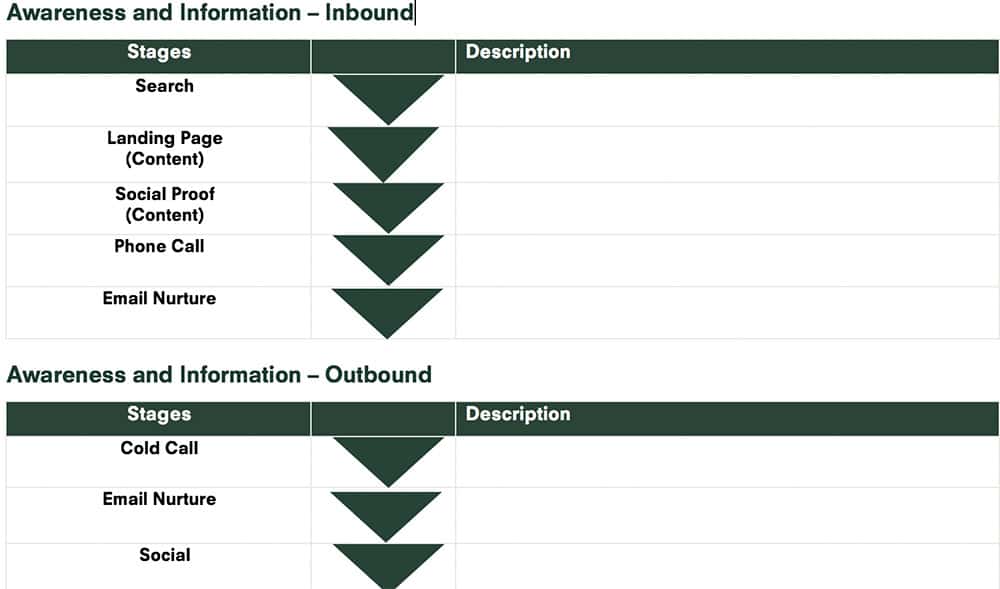All customers embark on a simple process when considering to buy a product or service. They tend to go through a sequence of steps to become aware of, consider and evaluate, and decide when purchasing a new product or service.
Benefits of mapping it out
So what are the benefits of defining your customers journey? Primarily it helps you to understand what touch points exist… and how you can best communicate to your audience at each specific step along the way. The benefits and results from marketing to your target audience in this way means you can nurture them through the sales process and provide them with the detail and information they need at the right place and the right time.
Simple but effective
It is quite simple yet many business’ fail to recognise the gains that can be achieved in marketing this way! It is a great way to get that competitive advantage in a sometimes very cluttered marketplace. Maximising satisfaction with customer journeys has the potential not only to increase customer satisfaction by 20% but also to lift revenue by up to 15% while lowering the cost of serving customers by as much as 20% (McKinsey, 2014).
Here is quite a simple way to look at the customer journey:

Do your ground work…
You think you know but you may not always have the best understanding of what drives your customers, so do the ground work. Run a few surveys or interviews and get that intimate understanding of the who, the how and the what! Be specific, over and beyond demographic profiles. Although, this is important when profiling your personas we want to tap into the customers pain points and be clear on what drives them.
Some ideas of what to ask that will help you to formulate your customer journey include:
- How do your customers describe their end goal or challenge?
- How do your customers conduct their research to achieve their goal or overcome their challenges?
- What are customers common misconceptions?
- What criteria do your customers need met when considering your product / service?
- How do customers measure their options and what meets their desired needs?
- What do your customers like about your products/service?
- What don’t your customers like about your product / service?
- Are there any external influences to your customers decision make process?
1. Awareness
The first stage when customers realise they have a problem and set out to do something about it. So how are we going to get more and more of your target audience to find out about you? This is the part of the strategy that we need to list out the potential channels your customers may engage with you during the preliminary educational process.
Choose your channels
Whilst we live in a digital world, there are a multitude of ways in which you can get your target audience interested in your offering, however not all are suitable or achievable given factors such as available budget. What you do want to aim for however is a good mix of both inbound and outbound strategies, starting with those that will give you the best return on your investment. Below we categorise them into two main streams: inbound and outbound.

Your ground work around your persona and understanding what drives your customer will also help to reveal the marketing channels and the type of content your customers will be searching for at each touchpoint.
2. Interest & decision making
Your customers have now become aware of you, you now need to find ways that engage and excite an interest in your business, service or product. Be mindful that 81% of shoppers conduct online research before buying (Adweek, 2014) and 71% of customers shop with a specific scenario, not a product in mind (Compare Metrics, 2014).
Go back to your initial ground work and revisit your results around some of those questions like:
- What are customers common misconceptions?
- What criteria do your customers need met when considering your product / service?
- How do customers measure their options and what meets their desired needs?
Consider how you can best demonstrate your value to start influencing them during their research and decision making process. Be more consumer-driven and deploy strategies that may connect with them such as:
- Case studies
- Testimonials / Reviews
- FAQs
- Before and after
- Proven results, research
3. Purchase
Make the customers purchase experience with you a great one. This marks the beginning of your relationship with the customer that has the potential to influence them on future decisions and certainly has the potential to turn into a review for your business with some ongoing loyalty if you get it right. Mapping out you process from purchase to post purchase is a good idea to capture how you’re tracking in providing your customers with a great experience and in meeting their expectations of you.
Review and assess touch-points like:
- Customer service
- Check out process
- Post purchase communications
- Deliveries
- Returns Policy
Ask yourself:
- What am I currently doing?
- How well am I doing it?
- What can I do better?
- What are my competitors doing and are they doing it better?
4. Long term relationship – repeat! repeat! repeat!
You have worked so hard to get your customer why finish there. Developing your relationship further is critical to keep the cycle of repeat business going. Research (done by Frederick Reichheld of Bain & Company) found that it costs you anywhere from five to 25 times more to acquire a new customer versus retaining an existing one?
In today’s consumer world, customer is king. They want it now, they want it tailored, they want to feel special and appreciated, and they are happy to come along for a ‘ride’ of enjoyment, entertainment and inspiration. Some ideas include on building the relationship include:
- Stay in regular but not annoying contact
- Be responsive to their needs after the sale (this will go a long way)
- Get their feedback and ideas on how you can improve
- Make it personal see them one on one if you can, pick up the phone and see how they are getting on
- Make them feel they have direct contact with you and any after sales services
- Add value by incentivising repeat purchases or rewarding loyalty
Example of reward loyalty:

Need more help? Talk to us at Due North








